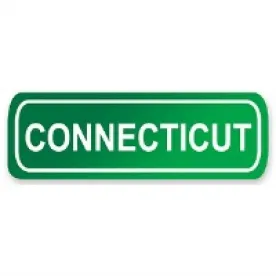Argument Recap: Bifolck v. Philip Morris, S.C. 19310
On Tuesday, September 13, 2016, the Connecticut Supreme Court heard oral arguments in Bifolck v. Philip Morris, Inc., S.C. 19310. The question before the Court was whether, for product liability actions premised on design defects, Connecticut should abandon its consumer expectation test and adopt a risk utility test that requires proof of a reasonable alternative design.
The case has significant implications for how product liability claims will be proven under Connecticut law going forward and, as such, will affect businesses that manufacture, distribute, and sell products within this state. The importance of this case is highlighted by the fact that twelve organizations filed amici briefs (Murtha Cullina authored an amicus brief on behalf of the Connecticut Business & Industry Association, which was joined by the New Haven Manufacturers Association and the Insurance Association of Connecticut).
Connecticut’s current standard for design defect cases dates back to 1965, when it became one of the first states to follow the Restatement (Second) of Torts. The Restatement (Second) provides that product manufacturers are strictly liable for injuries caused by a defective condition that is “unreasonably dangerous to the user or consumer . . .” Whether a product is “unreasonably dangerous” is determined by applying the “consumer expectation test,” meaning the product design is dangerous beyond what would be contemplated by an ordinary consumer who purchases it based on ordinary knowledge of its characteristics.
As product liability claims based on design defects and failure to warn evolved, courts around the country struggled to apply the consumer expectation test in adjudicating those claims. As a result, some states began using risk-utility tests to evaluate product design, considering several nonexclusive factors in the analysis such as “the manufacturer’s ability to eliminate the unsafe character of the product without impairing its usefulness or making it too expensive to maintain its utility.” Under these risk-utility tests, a manufacturer was not liable for a design that provided optimal safety given the intended use of the product, even if the product design did not eliminate every risk.
In 1997, the Supreme Court in Potter v. Chicago Pneumatic Tool Co., 241 Conn. 199 (1997), revised Connecticut product liability law by adopting the so-called “modified consumer expectation test” for complex product designs where an ordinary consumer could not form reasonable expectations of safety. The Potter Court rejected the risk-utility test that appeared in the then-draft version of the Restatement (Third) of Torts due to two concerns: requiring proof of a reasonable alternative design would require plaintiffs to retain expert witnesses, and in some instances, a product may be defective even though there is no feasible alternative design.
Earlier this year, in Izzareli v. R.J. Reynolds Tobacco Co., 321 Conn. 172 (2016), the Supreme Court expressly reaffirmed that the test in Connecticut for product liability cases arising from design defects is the modified consumer expectation test set forth in Potter. However, in recognition of the fact that courts in jurisdictions throughout the country have continually abandoned the consumer expectation test in favor of the risk-utility test set forth in the Restatement (Third) , two justices issued a concurring opinion stating that Connecticut should join those states.
Bifolck presents an opportunity for the Court to address this question more directly. The Court asked the parties and invited several organizations to submit briefs on this issue. The plaintiff, along with several plaintiffs-side bar associations, urge the Court to continue to apply the consumer expectation test. They argue that the legislature is the appropriate body to adopt what they contend would be a “seismic” change in the state’s product liability law, positing that it would eliminate strict liability and replace it with a foreseeability standard. At oral argument, members of the Court appeared to debate whether the legislature’s inaction sincePotter should be treated as its tacit acceptance of the current “modified” test, or an acknowledgment that it is within the province of the Court to evolve Connecticut product liability law.
The defendant and several amici parties ask the Court to abandon the current test and adopt the Restatement (Third) approach. They posit that the risk-utility test is the modern method for evaluating design defect claims, and is premised on notions that products are not generically defective merely because they are dangerous and that liability for harm caused by product designs should attach only when the harm is reasonably preventable. Adopting the Restatement (Third), they argue, would clarify and simplify Connecticut product liability law by providing a single standard by which to evaluate alleged design defects. They claim that requiring proof of a reasonable alternative design is essential for giving factfinders guidance on how to assess the product design at issue. Finally, the defendant and amici assert that the risk-utility test set forth in the final version of the Restatement (Third) squarely addresses the concerns of the Potter Court, so the Court’s earlier reservations should not prevent the adoption of the widely-accepted risk-utility standard for design defect cases. During argument, some members of the Court questioned whether there were a need to adopt the Restatement (Third) and its proof of a reasonable alternative design requirement, such as a string of Connecticut verdicts that highlight the shortcomings of the current Potter approach.
We will continue to monitor this important product liability case.




 />i
/>i

